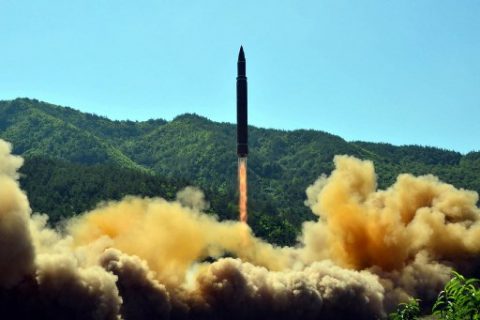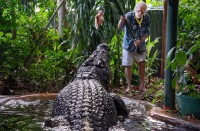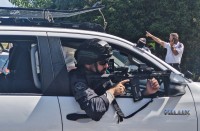
/ AFP /
by Thomas Watkins
Agence France Presse
WASHINGTON, United States (AFP) — The Pentagon has picked up signs that North Korea is prepping for another missile test, a United States defense official said Tuesday, as the US cited progress in pushing China to impose tough new United Nations sanctions.
Speaking on condition of anonymity, the official told AFP that if the test goes ahead, it would “probably” occur on July 27, which is the 64th anniversary of the signing of the Korean Armistice Agreement.
The date is a public holiday in the nuclear-armed North and celebrated as Victory Day.
The official said the test would be of either an intermediate-range missile or North Korea’s ICBM — known as a KN-20 or a Hwasong-14.
That would be the second time Pyongyang has tested an ICBM, after its July 4 rocket launch that caused global alarm.
Experts assessed it could have put Alaska in range, bringing Pyongyang’s long-held dream of a missile that can deliver an atomic warhead to the United States within reach, and presenting President Donald Trump with a stark challenge.
South Korea’s news agency Yonhap quoted a government source as saying Seoul had seen North Korea moving transporter erector launchers carrying ICBM launch tubes in North Pyongan province.
“They’re setting up for something,” a second US defense official told AFP.
‘Pretty serious sanctions’
After North Korea’s July 4 test, the US launched a push at the UN for tougher measures against Pyongyang.
US Ambassador Nikki Haley on Tuesday cited progress in talks with China on imposing what she termed as “pretty serious” new UN sanctions.
The US has been locked in negotiations with China for nearly three weeks on a new raft of measures, and Haley said China was negotiating with Russia separately on possible tougher sanctions.
“I think we are making progress,” Haley said.
“It’s not as fast as I would like but these are pretty serious sanctions and so I think that there is a lot of thought going into this.”
Haley told the UN Security Council after the test that she hoped to present new measures in a few days, such as cutting off oil supplies, banning North Korean guest workers or imposing new air and maritime restrictions on North Korea.
In all, six sets of UN sanctions have been imposed on North Korea since it first tested an atomic device in 2006, but two resolutions adopted last year significantly toughened the sanctions regime.
Haley said the true test will be Russia’s role. Moscow maintains the July 4 launch was not an ICBM, citing its defense ministry’s assessment.
Moscow has also argued that sanctions are not the answer to rein in North Korea, and that talks, as advocated by Beijing, were needed.
North Korean leader Kim Jong-Un, who personally oversaw the July 4 launch, described it as a gift to the “American bastards.”
‘Close surveillance’
CNN cited a US defense official saying transporter vehicles carrying launching equipment were seen arriving at Kusong in North Pyongan last Friday.
Kusong has been the scene of past tests, including in May when an intermediate-range ballistic missile traveled more than 700 kilometers (435 miles).
The North last week refused to respond to the South’s offer to open dialogue to ease tension.
“We’re keeping close surveillance on the North for possible provocative acts,” a South Korean defense ministry spokesman told AFP.
Yonhap also quoted a different Seoul government source as saying that an 1,800-ton North Korean submarine in the Sea of Japan (East Sea) may be collecting data to prepare for a ballistic missile test-launch from the North’s largest submarine.
The North last August successfully test-fired a submarine–launched ballistic missile.
© Agence France-Presse







